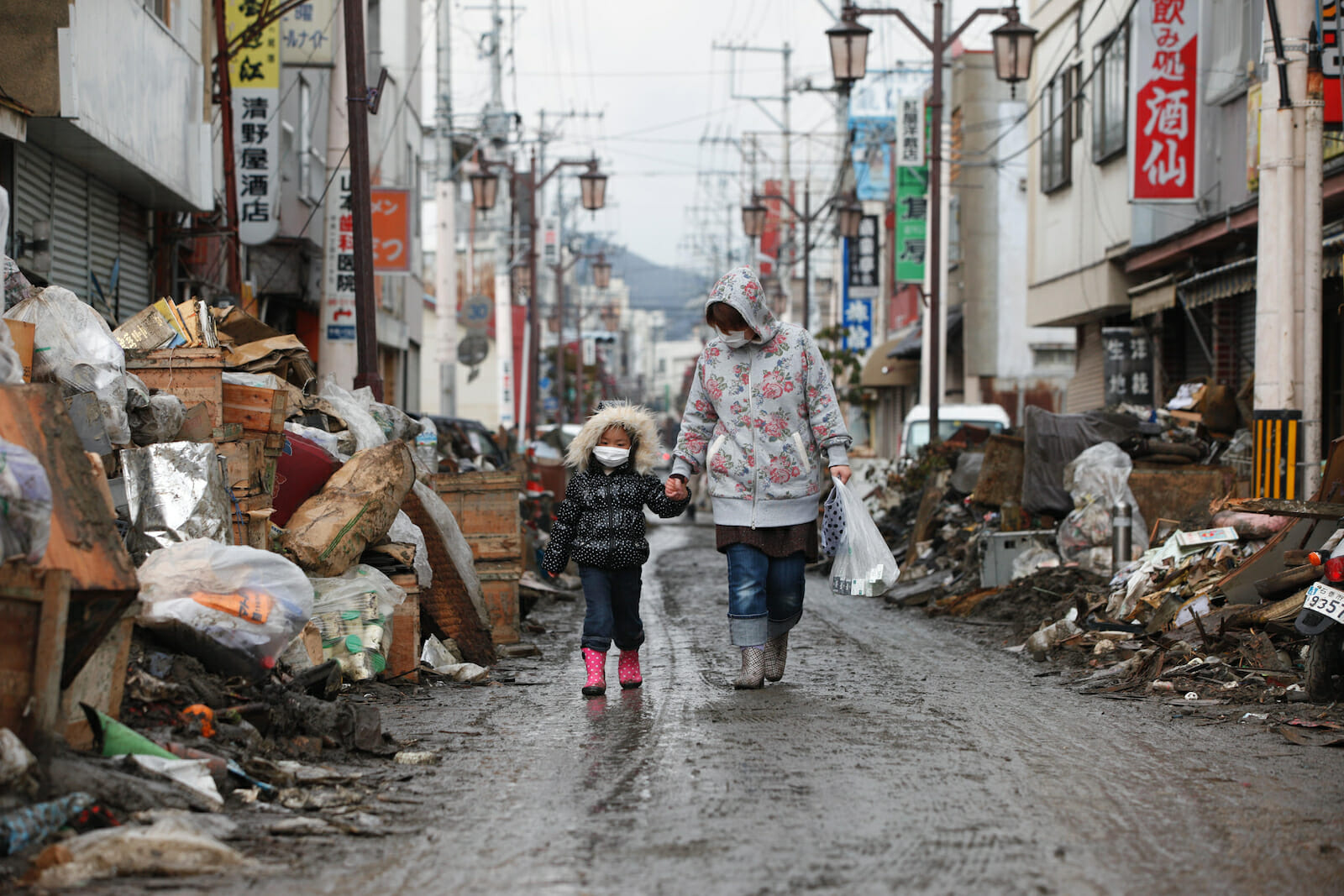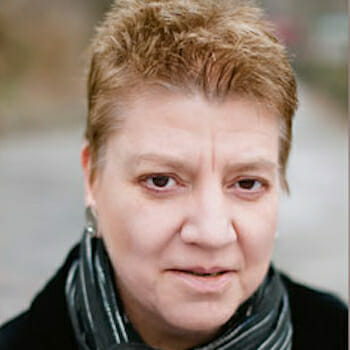
Culture
The Island of Miyatojima: An Architect comes to its Rescue
For Americans, unless you live in New Orleans, it’s very hard to imagine the extent of the devastation of this year’s earthquake, subsequent tsunami and the Fukushima Daiichi nuclear power plant meltdown which the Japanese call “3/11.”
“I have seen disaster zones around the world, but none compare in the scale of damage to the latest disaster,” said architect Shigeru Ban, after visiting Otsuchi, Iwate Prefecture, and other devastated areas. Miyatojima Island in Higashimatsushima, Miyagi Prefecture suffered severe tsunami damage. Shots of the island show that built structures were virtually leveled. Over 70% of the 260 homes on the island, engulfed by the tsunami, were washed away. Not only were the islanders’ homes battered by the tsunami, severe damage was sustained to three of its key industries, fishing, tourism, and seaweed harvesting.
Since the earthquake, the island has become depopulated. Although Miyatojima had a population of 971 in 2010, many families have left the island along with many young people looking for work. In the Community Restoration Plan announced at the end of September, three of the four communities on Miyatojima were marked for moving from the seriously damaged coastline to the higher ground behind them. It is unclear if there will be enough land and funding available for the reconstruction. The local people have great fortitude and resilience but these qualities alone will not help them revive local industries and rebuild housing. But they do have some remarkable allies.
Kazuyo Sejima, one of a group of dedicated top Japanese architects who is determined to bring her pro-bono expertise to Fukushima’s devastated towns and villages, is currently devoted to a key local volunteer project– the reconstruction plan in Miyatojima. The model, measuring around 2.5 meters wide and four meters long, was transported to Miyatojima by truck, and then discussed with residents.
To date, Sejima has visited the island several times to develop a reconstruction plan in consultation with the local residents. She sits with them, talks with them, asks them to describe the buildings they remember, and sketches out an approximation, which will later be incorporated into the overall model of the town. Of Miyatojima, Sejima said, “When you talk with the residents, you realize that even though the town has been lost in a physical sense, it remains firmly rooted in their hearts…I want it to become a beautiful town in which the lives of people linked with the sea form a part of the scenery.”
Can Miyatojima Survive?
Sejima’s is a beautiful image, but it will not be easy to bring the town back to life. Right from the beginning of the disasters, Miyatojima suffered even more than its neighboring communities because it is an island, connected to the mainland and the rest of the world, by a bridge which was destroyed. In March 2011, faced with disasters, many people in Miyatojima say that they drew on the strength of their recollections of “the old days,” when they were so isolated from the mainland that they had to become self-sufficient. The islanders prepared themselves, then, knowing that disaster from a tsunami or earthquake might strike at any time.
The residents of Miyatojima were able to sustain themselves after the bridge to the mainland was destroyed. They mustered their strength to help each other and to maintain order amid chaos. Residents in less damaged areas took turns to make rice balls packed with locally famous seaweed and to bring blankets and kerosene to the impacted residents on the island. Helicopters brought in relief supplies and transported them to sick people. However daunting, there were a number of elderly people who suffered because they did not have access to necessary medicines. “People on this island are very strong,” said Sanae Katahira, a nursing teacher staying on the island. “It’s like people are going back to the old way, to the time when they had to sustain themselves as islanders when isolated.”
Kosaku-san is proprietor of one of the island’s major industries, a fishing lodge, one of only four out of thirty, which survived the quake and tsunami. The future of the fishing lodge and the future of fishing tourism is unclear. Because reconstruction will be extremely expensive, not many lodges are considering rebuilding. Matsushima’s appeal as a fishing tourist attraction is likely to be affected. When asked about the lodge’s future, Kosaku-san replied, “Who knows how many customers will actually come back. It’s especially hard to say what will happen to the recent increase in foreign visitors.”
Kosaku says that he believes the key to recovery for the island is seaweed cultivation. In Japan, virtually every roadside stop equivalent to a 7-Eleven carries as a popular snack, rice balls wrapped in seaweed. If the region is able to provide higher quality seaweed and restore the original supply levels, it will contribute to the overall economic stability of the island. Seaweed cultivation may be beneficial to the island’s economy, because it does not require any structures to implement.
Prognosis for the Restoration of Northern Japan
According to Ken Collis, of RedR, which coordinates disaster relief engineering teams, the recovery effort for northern Japan will likely mean rebuilding entire towns from scratch. It could be several years before significant construction work is even started, he said. Collis said that from his experience after the 2004 tsunami in the Maldives, the initial planning phase could take up to a year. Another year could be spent on designing the new roads, bridges and houses that need to be rebuilt and reconstructing the old structures [roughly equivalent to the work Sejima and the islanders are now carrying out]. While a third year is spent putting contracts out for bidding. “It could easily take more than three years before construction really begins.”
But a group of Japan’s top architects, formed by Toyo Ito, Riken Yamamoto, Hiroshi Naito, Kengo Kuma and Kazuyo Sejima, are looking into ways to offer various proposals at a faster pace for the reconstruction process. One reconstruction project already under way is being led by architect Yamamoto who has worked on large collective housing projects. Yamamoto is looking into layouts for housing complexes, suggesting that the prefabricated buildings be situated so as to create public spaces such as small alleys and courtyards where people can mingle. “We share the blame for creating the 20th-century Japanese society model, which has been torn apart in this latest disaster,” Yamamoto said, explaining that infrastructure has been left up to the public sector, while housing has been the choice of the individual and influenced largely by market principles.
“There should be more of a public aspect to housing,” Yamamoto stressed. “Architects often tend to devote their skills to governments or corporations, or other such entities that bear great power…[But I] thought that architects should more directly contribute to society.” Architect Kuma said he sees an important role for his profession now. “Our role is to serve as a bridge between design and the harsh reality. Unless we fulfill that role, the ‘culture of space’ could end up becoming obsolete,” Kuma added. Kazuyo Sejima is clearly serving as this bridge.
Kazuyo Sejima
In 1995, architects Kazuyo Sejima and Ryue Nishizawa co-founded SANAA, the partnership that has designed innovative buildings in Japan and around the world. Some of their best-known works include the Toledo Museum of Art’s Glass Pavilion in Toledo, Ohio, the New Museum of Contemporary Art in New York, NY, the Rolex Learning Center in Lausanne, Switzerland, the Serpentine Pavilion in London and the 21st Century Museum of Contemporary Art in Kanazawa, Japan. The latter won the Golden Lion in 2004 for the most significant work in the Ninth International Architecture Exhibition of the Venice Biennale. In 2010, SANAA (Sejima and Nishizawa) won the Pritzker Architecture Prize, regarded as the Nobel Prize of the architectural world. The Pritzker Prize jury members recognized SANAA’s architecture for being “simultaneously delicate and powerful, precise and fluid, and ingenious but not overly or overtly clever.”
Sejima also became the director in 2010 of the 12th Venice Biennale International Architecture Exhibition. The innovative Biennale drew over 170,000 visitors and was the recipient of high critical acclaim. Born in Ibaraki prefecture, Kazuyo Sejima received a degree in architecture at Japan Women’s University. In 1987, she opened her own studio in Tokyo and in 1992 she was named the Japan Institute of Architects’ Young Architect of the Year in Japan. Kazuyo Sejima has taught at Princeton University, the Polytechnique de Lausanne, Tama Art University and Keio University. Ryue Nishizawa comes from Kanagawa prefecture, where he graduated from Yokohama National University with a Master’s degree in architecture in 1990. He established his studio “Ryue Nishizawa” in 1997, and he holds a professorship at Yokohama National University.
Currently, SANAA is in charge of the design for the Louvre Reims, an extension of the Louvre Museum scheduled for opening in December 2012. SANAA is also proceeding with construction plans for museums, concert halls and office buildings in Germany, China, South Korea, Mexico and the United States.
Progress
Four months after the disasters, progress in the reconstruction process had been made. A group of highly skilled and trained professionals, working as volunteers, have made a great start in the right direction. ArchiAid (Relief and Recovery by Architects for Tohoku Earthquake and Tsunami) is a platform coordinating the volunteer rebuilding of the Tohoku region. With over two hundred architects and urban planners, the list of ArchiAid’s supporting members reads like the who-is-who of Japanese architecture (Sejima, Ito).
Architecture for Humanity, an association of Japanese universities, is creating a dynamic visual piece to raise funds for Tohoku building projects. Like Kazuyo Sejima, they are collecting personal stories from Tohoku residents and translating them into a giant model. With these images, university students and professors will build a model roughly the size of half a football field and display it in a traveling exhibition. These are significant achievements. But it is important to look back at the comments of architects Yamamoto and Kuma, “Our role is to serve as a bridge between the design and the harsh reality.”
The harsh reality is that seven months later, the mass of debris has not yet been removed from the devastated areas. Indigenous industries, fishing tourism and seaweed harvesting, have yet to be resuscitated, although there is more hope for the latter. The island has lost many of its people, particularly its young people, its most promising labor force, which only frustrates efforts to begin ambitious building projects. It would be nice to end on a high note. The ingenious Architecture for Humanity fundraising plan has a lot of merit and graphic appeal.
One can easily imagine an international funder’s positive response to this. In the same vein, the high international profiles of the architects working on Fukushima projects, including Miyatojima, can only help raise visibility for the fundraising efforts. But work has yet to come from the Japanese government relating to land and funding for a massive rebuilding effort. It’s hard not to remember that comment from the Fukushima/Tohoku people, “The earthquake should have hit in Tokyo.”

